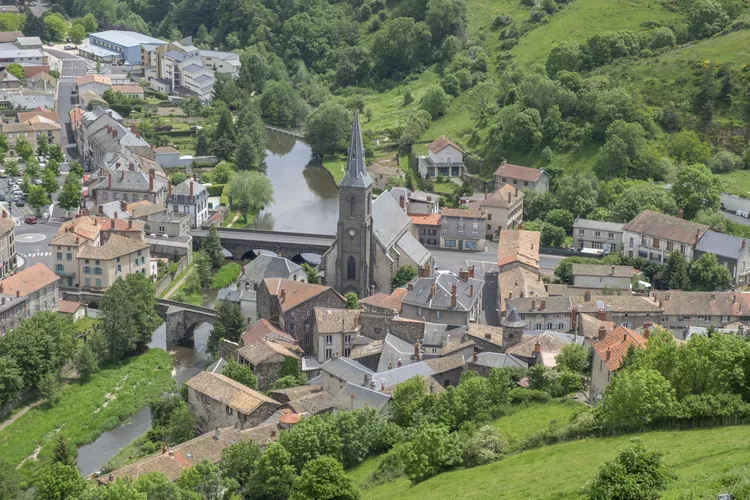Summary
Saint-Flour is tucked between two volcanic mountain regions in the Massif Central in France in the Haute Auvergne region, offering travelers a chance to see the rural side of medieval France as well as the natural beauty of a volcanic landscape. Medieval Saint-Flour itself is perched on top of the Auvergne’s highest volcanic outcrops, and the views of the surrounding countryside from the high town are spectacular.
Location
Saint-Flour is located about 225 km south of Paris on the famous free autoroute A75 that starts heading south from Clermont-Ferrand, making it an interesting stopover for the tourist heading toward the south of France – Cathar country, Nimes, or Provence. Few tourists know of the Auvergne, but there is plenty to do and lots of interesting food to eat.
The Saint-Flour Office de Tourisme is found at 17 bis pl Armes 15100 Saint-Flour.
An Incredibly Short History of Saint-Flour
The town’s history starts in the 4th century with the arrival of Christian evangelist Florus, who is said to have built a small chapel at the peak of the outcrop. In the medieval period, Saint-Flour rivaled Aurillac as the capital of the Auvergne because of its advantageous position on the trade routes.
Regional Cuisine of St. Flour and the Auvergne
In Saint-Flour, you’ll find hearty regional dishes that ensure no part of the animal goes to waste. These include:
- Tripoux: A traditional stew made from tripe and sheep feet tied in parcels.
- Aligot: A delightful mix of mashed potatoes combined with Cantal cheese and garlic, often served alongside sausages.
- Green Lentils: Sourced from Le Puy to the east, these lentils thrive in volcanic soil.
Additionally, local cheeses such as Cantal and the famous Bleu d’Auvergne are popular choices. The region’s mountain air contributes to the quality of cured ham, making mountain pork dishes a staple as well.
Where to Stay
When you drive up to the high town, there is a parking lot directly at the top, in front of the Grand Hotel de L’Europe. This establishment is reasonably priced, although its elegance may be somewhat faded. Consider opting for a room with a view to enhance your stay.
Attractions in and Around Saint-Flour
Saint-Flour is a charming village that invites leisurely strolls. Visitors will notice the skillful craftsmanship involved in working with the black basalt characteristic of this volcanic region. Summer brings numerous festivals, and traditional markets operate on Tuesday and Saturday mornings. Notable attractions include:
- The Cathedral of St. Pierre: A fortress-like church constructed from black basalt, featuring a life-sized wooden statue of Christ. Guided tours are available.
- Musee de la Haute-Auvergne: Located next to the Cathedral in a former 17th-century Bishop’s Palace, this museum showcases archaeological artifacts from the Neolithic Age and exhibits on local history.
- Musée d’Art et d’Histoire Alfred Douët: This museum hosts a wide array of paintings, sculptures, and tapestries reflecting the region’s artistic heritage.
- Musée Postal d’Auvergne: A fascinating museum dedicated to the history of postal services from the 18th to the 21st centuries.
- The Rando Philo of the Pays de Saint-Flour: Enjoy philosophical hikes held every Sunday in May.
Activities on Route 75 near Saint-Flour
Outdoor enthusiasts will find numerous hiking, mountain biking, and horse trails in the Massif Central. Moreover, a notable side trip west of Clermont-Ferrand is Vulcania, a park dedicated to the 80 extinct volcanoes in the area. Visitors will want to allocate 6-8 hours for a thorough exploration of this unique attraction.
The towering viaduct of Millau, recently completed and celebrated as the tallest viaduct in the world, serves as the Route 75 bypass between Clermont-Ferrand and Béziers. Its engineering triumph has prompted the Millau Tourism Office to bolster its staff to assist the numerous inquiries it attracts.





